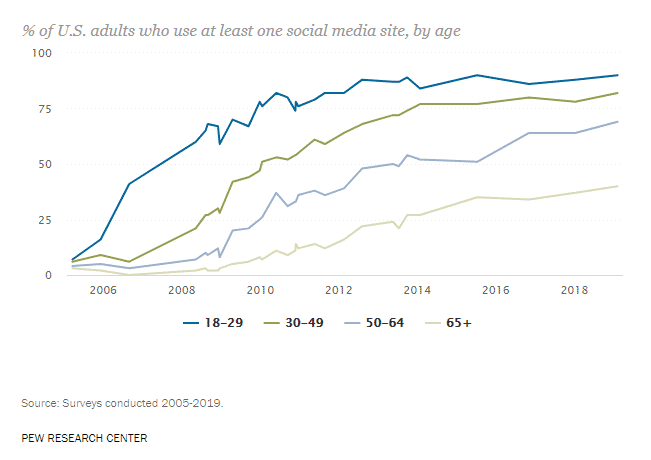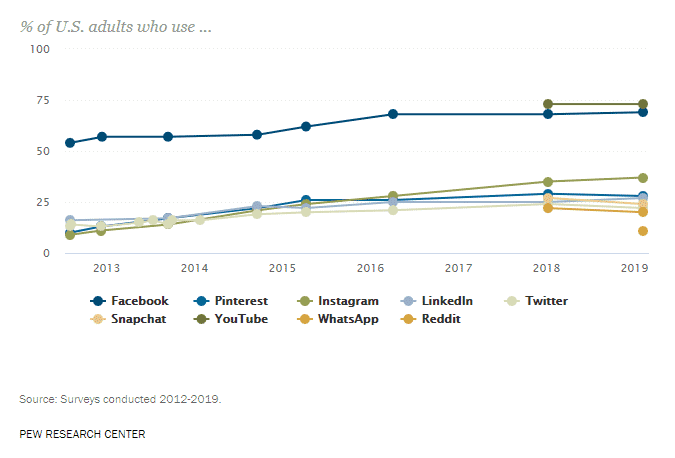Rural America Market Research

At Callis, we’re proponents of research. For over 30 years, we’ve used research to build out and execute strategic marketing programs that deliver results for our clients, helping them build their brands and grow their businesses.
To help you better understand the rural American consumer, we’ve compiled some compelling market research applicable to the rural American audience. This research includes digital and social media usage information and trends from a variety of sources. Here, we’ll share the information with you, along with insight you can apply to your digital marketing and social media programs to help them be more effective and get the results you desire.
1. Rural America is becoming more connected.
Roughly two-thirds of rural Americans (63%) say they have a broadband internet connection at home, up from about a third (35%) in 2007, according to a Pew Research Center survey conducted in early 2019. Rural Americans are now 12 percentage points less likely than Americans overall to have home broadband; in 2007, there was a 16-point gap between rural Americans (35%) and all U.S. adults (51%) on this question.1
What it means: Digital marketing strategies targeting rural America that may have proven unsuccessful in the past are continuing to become more relevant. With more people in rural America spending more time online, there are more opportunities for your brand to connect with your audience digitally. In addition, targeting capabilities are continuously improving. Be sure to fully explore digital marketing opportunities while you’re building out your marketing plan for the coming year. Just because something hasn’t worked well in the past, doesn’t mean it couldn’t work well in the coming year.
2. Rural America still spends less time online compared to other audiences but by a small and diminishing margin.
Rural Americans go online less frequently than those from urban and suburban areas. Roughly three-quarters (76%) of adults who live in rural communities say they use the internet on at least a daily basis, compared with more than eight-in-ten of those in suburban (86%) or urban (83%) areas. Meanwhile, 15% of rural adults say they never go online, compared with less than one-in-ten of those who live in urban communities (9%) and those who live in the suburbs (6%).1
What it means: While digital is becoming more and more relevant and effective with the rural American audience, it’s still important to hit the streets with a multi-media approach. Digital marketing has many advantages. You can target with pinpoint accuracy and you can measure everything you do. However, blending digital with traditional strategies is important in reaching the rural American audience. Creating multiple touchpoints allows you to reach the highest percentage of your audience as possible.
3. People of all ages are using social media.
As more Americans have adopted social media, the social media user base has also grown more representative of the broader population. Young adults were among the earliest social media adopters and continue to use these sites at high levels, but usage by older adults has increased in recent years.2
The days of presuming social media is “just for the kids” are long gone. While the highest usage of social platforms is in the 18-29 age bracket at 90%, the 30-49 age bracket is not far behind at 82%, followed by the 50-64 age bracket at 69%. 40% in the age 65+ bracket use at least one social media platform as well.

What it means: This means you need to consider all the age groups in your target audience with the content you’re developing and sharing on social media. You may need different content for different age groups. Depending on your situation, it could also mean that a social media component that may have been previously overlooked could in fact be a great addition to your marketing program. Or it could mean that you simply need to start allocating a few more resources to social media to maximize its reach and full potential.
4. Facebook and YouTube are the most popular social media platforms.
YouTube and Facebook are the most widely used online platforms, and its user base is most broadly representative of the population as a whole.2

What it means: Facebook and YouTube should be components of your digital marketing programs. Both platforms serve as powerful search engines and video content gets great results. The quick stats below really drive this home:
- YouTube has over a billion users, almost one-third of total internet users.
- 45% of people watch more than an hour of Facebook or YouTube videos a week.
- More than 500 million hours of videos are watched on YouTube each day.
- 92% of mobile video viewers share videos with others.
- 64% of consumers make a purchase after watching branded social videos.3
The numbers in the chart and stats above paint a pretty clear picture of the importance of Facebook and YouTube. However, the numbers in sections 3 and 4 are based on the entire U.S. adult population that uses social platforms. They do not take into account rural America vs. urban areas vs. suburban areas. Here’s how those numbers break out:
- 73% of U.S. adults from urban areas use Facebook,
- while 69% of U.S. adults from suburban areas use it,
- compared to 66% of U.S. adults from rural areas.
- 77% of U.S. adults from urban areas use YouTube,
- while 74% of U.S. adults from suburban areas use it,
- Compared to 64% of U.S. adults from rural areas.
Facebook and YouTube are very effective platforms to reach and connect with the entire U.S. adult population, including the rural American audience.
Rural America is becoming more and more connected, making digital marketing a powerful marketing solution packed with potential. At the same time, rural American’s do spend less time online than urban or suburban audiences. So along with digital, a multi-media approach will likely be best in effectively reaching this audience.
People of all ages are using social media channels to connect and interact with friends, family, brands and businesses. Facebook and YouTube are two social media powerhouses that hold a lot of opportunities to tell your story and leverage video to reach and engage your target audience.
We hope you found this research, information and insight valuable as you think about how you are going to approach the coming year.
Resources:
1 Digital Gap Between Rural and Nonrural America Persists – Pew Research Center
2 Social Media Fact Sheet – Pew Research Center
3 37 Staggering Video Marketing Statistics – Wordstream

